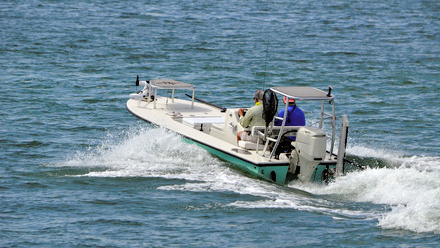Attracting young talent to the subsea industry
Ricardo João (MSc, CEng) digs below the surface to highlight why young people should join the sector.

When João started his journey into engineering, he wasn’t thinking about the subsea (underwater) industry. First, he studied chemical engineering.
“By the time I finished university, there was only one chemical engineering vacancy at the company (BP) I applied for,” he recalls. However, there were vacancies with the word ‘subsea’ attached. “I didn’t know what this subsea thing was, but there were options.” Not one to be discouraged by the unknown, he applied for – and was accepted – for a subsea role. He has never looked back.
“I was involved in major projects, replacement projects, repair projects of everything under the water, which was interesting,” João enthuses.
Even though this type of work seemed distant from chemical engineering, João started to see a link between his dissertation, which focused on fluid flow regimes, and the subsea world. “In subsea operations, you’re worried about fluid dynamics. Is the flow regime turbulent, in other words, slugging too much, which may cause pipelines to move a lot and become an integrity risk? So, I ended up really seeing how my chemical engineering background was linked to the subsea world.”
Later, João worked on an FPSO (floating production storage and offloading unit) before returning to university to take a second bachelor's degree in engineering and technology management and then a master's degree in engineering for marine professionals. He now works as a Production Team Leader.
Shining a light on the subsea industry
“Subsea is a very niche thing in the engineering world,” says João. “If you ask [students] what kind of engineering they want to do, they’ll tell you mechanical, electrical instrument, or process engineering – the big subjects. But they won’t say that they want to do that type of work specifically in subsea.”
Had circumstances been different when João finished his first degree, more jobs in chemical engineering or other more familiar sectors, for example, João may never have made his way into the subsea sector simply because he wouldn’t have known it existed. This lack of knowledge is not unusual because it is often neglected in early degree programmes.
“The narrative just has to be improved. When the schools talk about engineering, they just need to mention that there’s a world under the water,” he enthuses. That narrative could be as simple as noting how a process or technique may differ underwater or introducing some dedicated modules.
In addition, João says that career talks and days, even in secondary and high schools, should strive to include the subsea sector more.
“You can say, look, you can work in a refinery, but you can also work on engineering projects for infrastructures or equipment under the water. Chemical engineers: you can work on pipelines underwater. Electrical engineers: you can build these distribution systems, design cables. Mechanical engineers: you can work on carbon capture, tidal energy, wave energy.
“What the industry needs to do is really emphasise that whatever core skills you are getting from the core engineering disciplines, it can be applied under the water,” states João.
When discussing engineering or career options, João encourages educators and employers to use a range of terms – not just marine – to open young talent to the possibilities. The reason is that ‘marine’ can have a specific meaning depending on the sector.
“If you look at my offshore platform, we divide our areas of work into topsides, marine, subsea, and reservoir. The reservoir is under the seabed. Topside means the plant, the platform, above the water. Marine is usually everything related to vessel stability, offload, cargo tanks. Then you have subsea, which is from the seabed all the way to the surface.
“You just need to spark [young] people's curiosity and show them that the subsea sector is an option,” he concludes.
If you are a young professional, learn about Sea Your Future and discover how to get involved. You can also get in touch with other young people in the industry on IMarEST Connect. If you would like to get involved in speaking at career days or Sea Your Future events, contact [email protected]. We are always looking for volunteer speakers.
Newsletter image: Ricardo João; credit: Ricardo João.
Main image: underwater cables on the ocean floor in the Mediterranean Sea; credit: Shutterstock.
Tell us what you think about this article by joining the discussion on IMarEST Connect.






